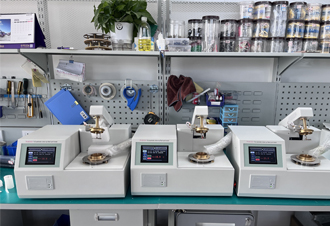 English
English



-
 Afrikaans
Afrikaans -
 Albanian
Albanian -
 Amharic
Amharic -
 Arabic
Arabic -
 Armenian
Armenian -
 Azerbaijani
Azerbaijani -
 Basque
Basque -
 Belarusian
Belarusian -
 Bengali
Bengali -
 Bosnian
Bosnian -
 Bulgarian
Bulgarian -
 Catalan
Catalan -
 Cebuano
Cebuano -
 China
China -
 China (Taiwan)
China (Taiwan) -
 Corsican
Corsican -
 Croatian
Croatian -
 Czech
Czech -
 Danish
Danish -
 Dutch
Dutch -
 English
English -
 Esperanto
Esperanto -
 Estonian
Estonian -
 Finnish
Finnish -
 French
French -
 Frisian
Frisian -
 Galician
Galician -
 Georgian
Georgian -
 German
German -
 Greek
Greek -
 Gujarati
Gujarati -
 Haitian Creole
Haitian Creole -
 hausa
hausa -
 hawaiian
hawaiian -
 Hebrew
Hebrew -
 Hindi
Hindi -
 Miao
Miao -
 Hungarian
Hungarian -
 Icelandic
Icelandic -
 igbo
igbo -
 Indonesian
Indonesian -
 irish
irish -
 Italian
Italian -
 Japanese
Japanese -
 Javanese
Javanese -
 Kannada
Kannada -
 kazakh
kazakh -
 Khmer
Khmer -
 Rwandese
Rwandese -
 Korean
Korean -
 Kurdish
Kurdish -
 Kyrgyz
Kyrgyz -
 Lao
Lao -
 Latin
Latin -
 Latvian
Latvian -
 Lithuanian
Lithuanian -
 Luxembourgish
Luxembourgish -
 Macedonian
Macedonian -
 Malgashi
Malgashi -
 Malay
Malay -
 Malayalam
Malayalam -
 Maltese
Maltese -
 Maori
Maori -
 Marathi
Marathi -
 Mongolian
Mongolian -
 Myanmar
Myanmar -
 Nepali
Nepali -
 Norwegian
Norwegian -
 Norwegian
Norwegian -
 Occitan
Occitan -
 Pashto
Pashto -
 Persian
Persian -
 Polish
Polish -
 Portuguese
Portuguese -
 Punjabi
Punjabi -
 Romanian
Romanian -
 Russian
Russian -
 Samoan
Samoan -
 Scottish Gaelic
Scottish Gaelic -
 Serbian
Serbian -
 Sesotho
Sesotho -
 Shona
Shona -
 Sindhi
Sindhi -
 Sinhala
Sinhala -
 Slovak
Slovak -
 Slovenian
Slovenian -
 Somali
Somali -
 Spanish
Spanish -
 Sundanese
Sundanese -
 Swahili
Swahili -
 Swedish
Swedish -
 Tagalog
Tagalog -
 Tajik
Tajik -
 Tamil
Tamil -
 Tatar
Tatar -
 Telugu
Telugu -
 Thai
Thai -
 Turkish
Turkish -
 Turkmen
Turkmen -
 Ukrainian
Ukrainian -
 Urdu
Urdu -
 Uighur
Uighur -
 Uzbek
Uzbek -
 Vietnamese
Vietnamese -
 Welsh
Welsh -
 Bantu
Bantu -
 Yiddish
Yiddish -
 Yoruba
Yoruba -
 Zulu
Zulu
high current pulse generator circuit
High Current Pulse Generator Circuit An Overview
A high current pulse generator circuit is a critical component in various applications including testing, research, and industrial operations. These circuits are designed to produce short bursts of high electrical current, which can be essential for testing the performance of electronic devices, simulating conditions for research, or driving certain types of loads in industrial processes.
Basic Working Principle
At its core, a high current pulse generator operates by charging a capacitor to a specific voltage and then discharging it rapidly through a load. This rapid discharge results in a high current pulse that can be controlled in terms of amplitude, duration, and frequency. The basic architecture of such a circuit typically involves power sources, capacitors, switches (like MOSFETs or IGBTs), and sometimes transformers.
The generator first charges the capacitor using a power source. Once the capacitor reaches the desired voltage level, a switching mechanism is activated. The switch allows the stored energy in the capacitor to discharge almost instantaneously, generating a pulse of high current that flows through the connected load.
Components and Design Considerations
1. Capacitor The choice of capacitor is crucial, as it must handle high voltage and current ratings. Electrolytic capacitors are common due to their high capacitance values, but ceramic or film capacitors may also be used for higher frequency applications.
2. Switching Device The switch needs to be able to handle the high current without overheating. MOSFETs (Metal-Oxide-Semiconductor Field-Effect Transistors) and IGBTs (Insulated Gate Bipolar Transistors) are popular choices because of their fast switching speeds and high current ratings.
high current pulse generator circuit

3. Control Circuitry This part of the circuit is responsible for controlling the timing and sequence of the pulse generation. It could involve simple timers or more complex microcontroller-based systems, depending on the desired flexibility and precision.
4. Load Characteristics Understanding the load is essential for ensuring that the current pulse generated matches the application's requirements. Inductive loads (like motors) and resistive loads (like resistors) will respond differently to current pulses, so the design might need to accommodate these differences.
Applications
High current pulse generator circuits find applications in several fields. In the automotive industry, they are used for testing battery performance under high load conditions. In semiconductor testing, these circuits help in analyzing the behavior of components under extreme operational conditions. In materials science, they are utilized to investigate the properties of materials subjected to rapid thermal cycling or high electrical stress.
Furthermore, these circuits are often employed in industries requiring electroplating or welding, where precise control over the current pulse is necessary for achieving optimal results.
Conclusion
The high current pulse generator circuit is a versatile tool in both industrial and research applications. With advancements in technology, the design efficiency and reliability of these circuits have improved significantly. Understanding the principles, components, and applications of high current pulse generators is essential for professionals working in electronics and electrical engineering. Whether for testing, simulation, or practical applications, mastering the high current pulse generator circuit is a key skill in the increasingly demanding field of modern electronics.
-
Ensuring SF₆ Gas Safety: Introducing PUSH’s Integrated SF₆ Analyzer for Dew Point, Purity, and Decomposition MonitoringNewsJul.10,2025
-
Exploring the Main Types of Industrial Endoscopes and Their Applications Across IndustriesNewsJul.04,2025
-
Testing Equipment Industry Sees Major Advancements in 2025: Smart & Precision Technologies Lead the WayNewsJun.06,2025
-
Applications of Direct Current Generators in Renewable Energy SystemsNewsJun.05,2025
-
Hipot Tester Calibration and Accuracy GuidelinesNewsJun.05,2025
-
Digital Circuit Breaker Analyzer Features and BenefitsNewsJun.05,2025



